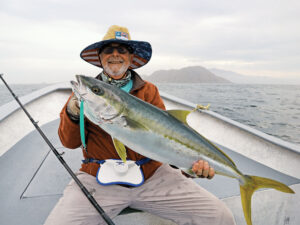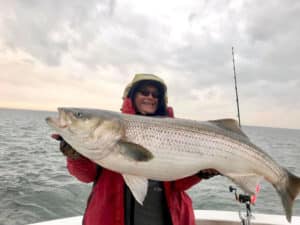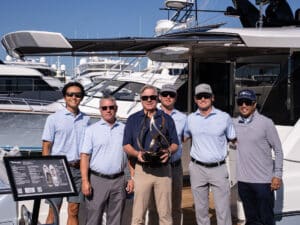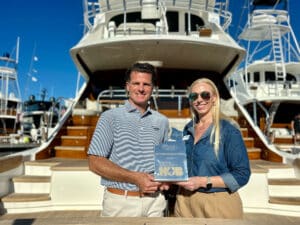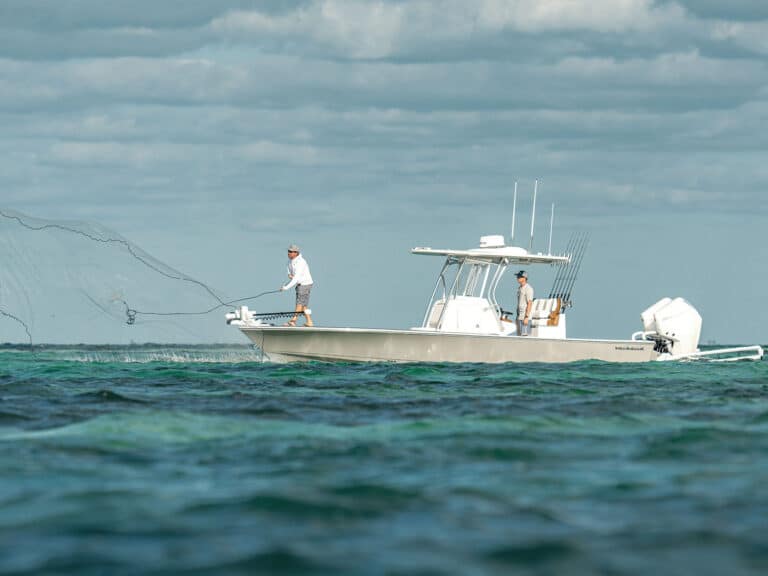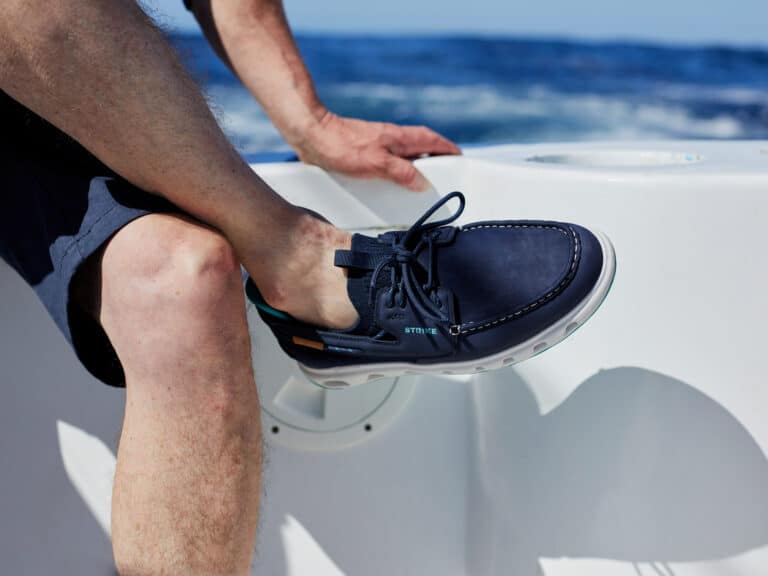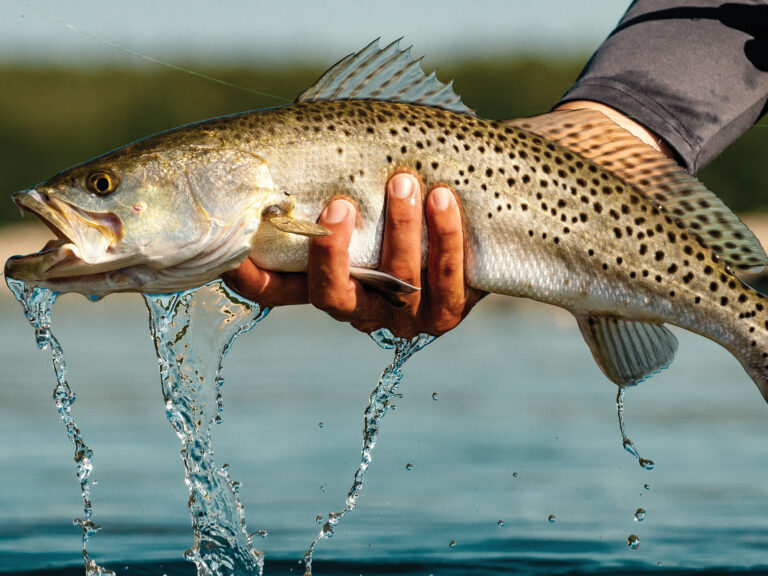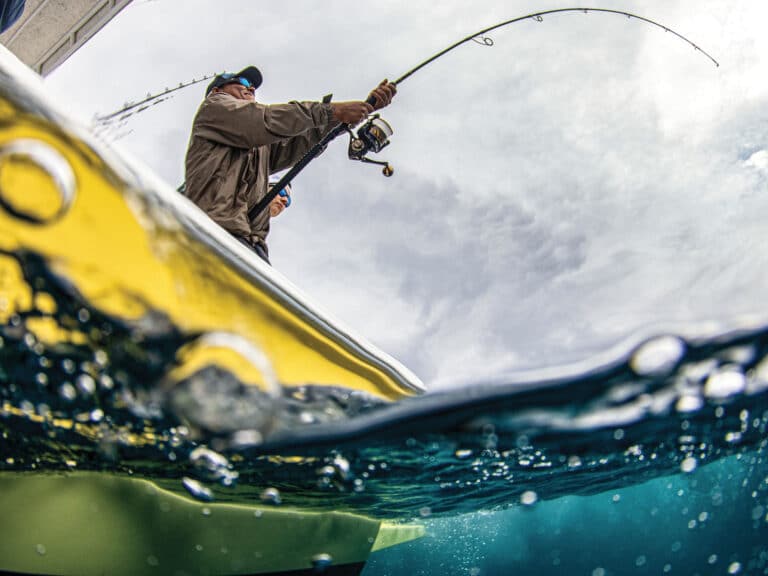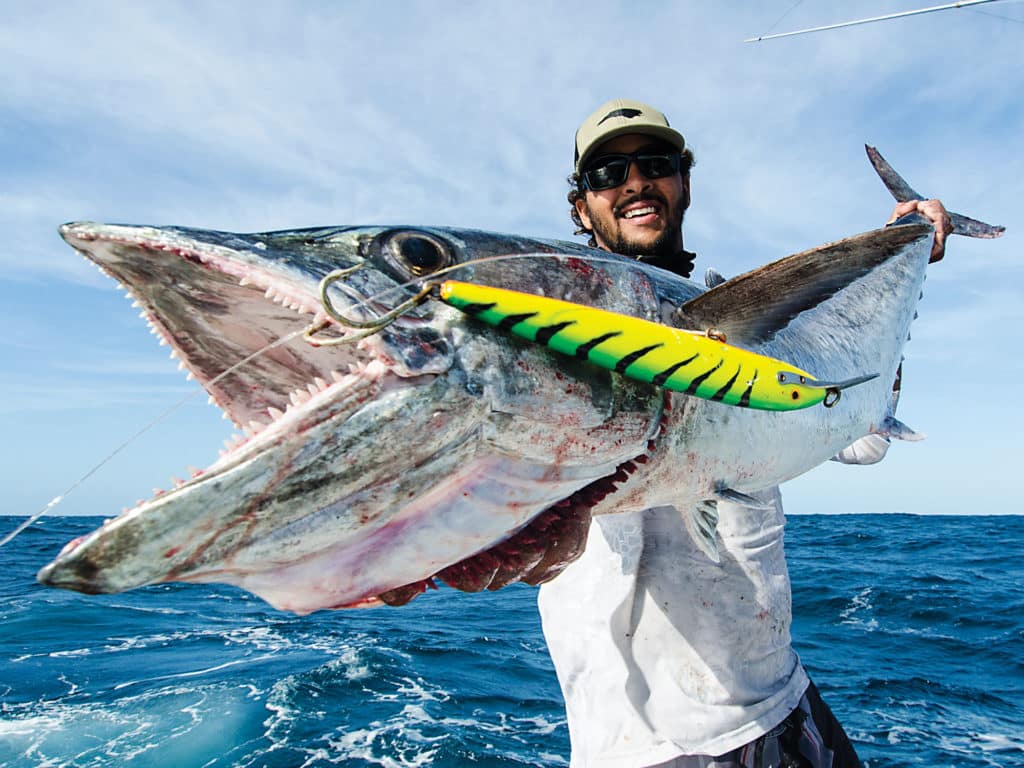
The incredible big king mackerel action that brought top money tournaments and hordes of anglers to the mid-Atlantic region every summer and fall faded in the late ’90s, but hardcore locals didn’t give up. Instead, they started experimenting with different tactics to see if smoker kings were simply more scattered or had gotten wise to the usual live-bait trolling. In an effort to cover more water, kingfish seekers turned to swimming plugs and pushed the throttle forward. The results surpassed all expectations.
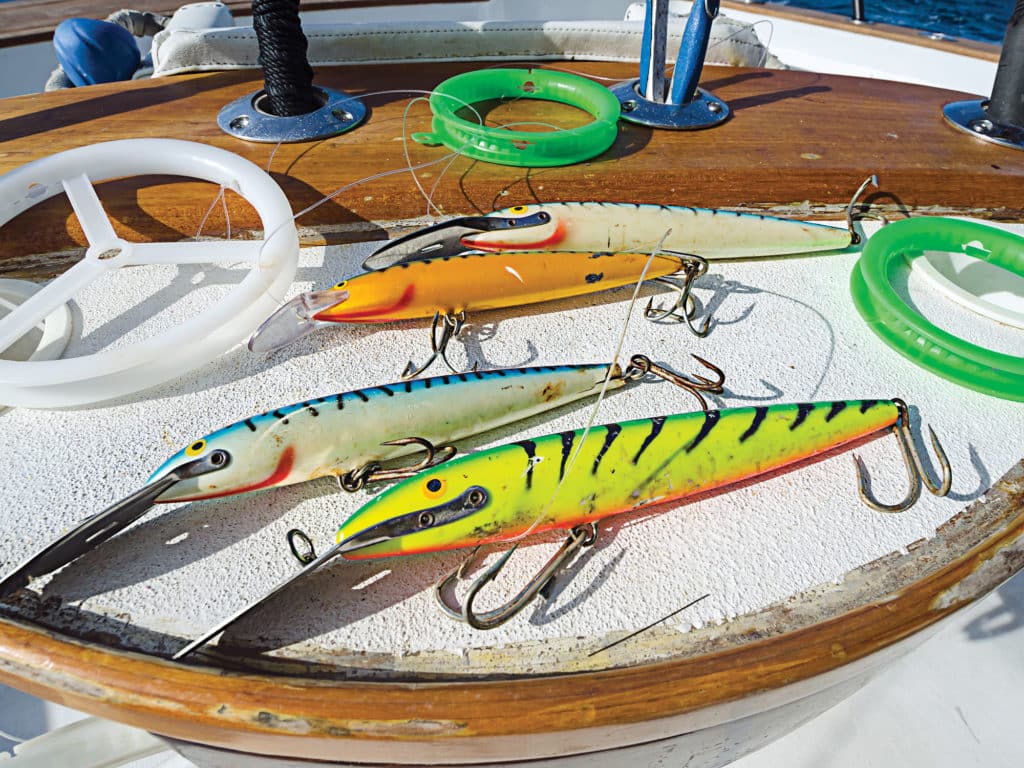
MOTHER OF INVENTION
When I heard about the catches some anglers were reporting, the first person I consulted was Wayne Seymour, a trusted fishing erudite from Virginia Beach. He’s been part of the local sport-fishing scene since the early days, and when the smoker king runs suddenly abdicated, Seymour was one of the first to switch to plugs. “Some of the biggest kings I’ve seen were taken on plugs,” he recalls, “but lately we’ve been catching more red drum and cobia.” And those aren’t the only species to fall for fast-trolled plugs. Tuna, bluefish, jack crevalle and others attack them regularly.

TACKLE PICKS
Fishing off a 24-foot center console, Seymour pulls six to seven lines with -Rapala Magnum and -MirrOlure Classic lures. “These lures are hand-built and tank-tested,” he says, “and they troll straight at up to 12 knots.” He uses 30-pound, lever-drag reels spooled with 65-pound braid. “The lever drag allows me to set the drag light for the strike and then increase it for the fight,” Seymour adds, “and the thin-diameter braid lets the lures dive deeper than similar pound-test monofilament.” However, the lack of line stretch makes it imperative to set the drag at 5 pounds for the strike. “Any heavier and a big fish will snap the line, pull the hook, or even break the lure during a high-speed hit,” he says.

PRO TIP # 1:
“Six knots is usually the magic number, but the trolling speed depends on the species you’re chasing. For big bluefish, slow down to 4 knots. For smoker kings and tuna, throttle up to 10 knots.” – Wayne Seymour
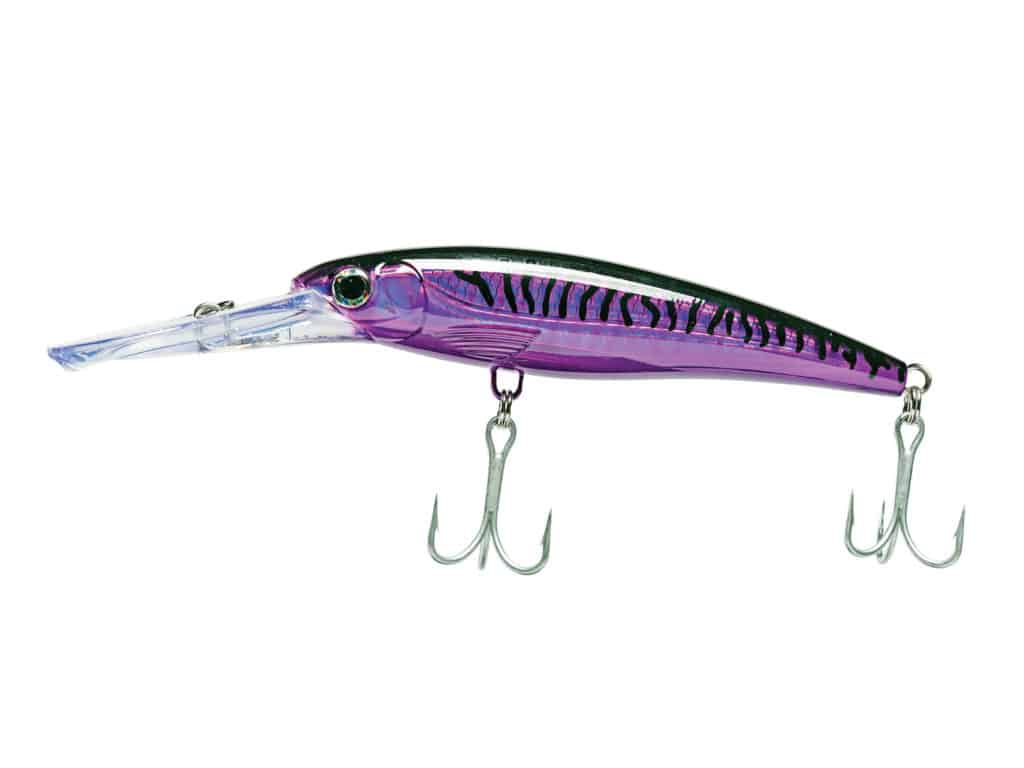
RECOMMENDED RIGGING
The Virginia Beach veteran adds a 6-foot leader of 40-pound mono with an FG knot. “If the water is super clear,” he says, “I make the leader 12 feet long and switch to fluorocarbon.” To connect the lure to the leader, Seymour uses a 250-pound snap swivel. When it comes to colors, his spread usually includes natural schemes, such as black on back, silver sides and dark purple, as well as highly visible Firetiger (black-green-orange) or dorado (yellow-green) patterns. “When the fish key in on one color, I switch almost everything over to that scheme,” he says.

SETTING THE SPREAD
Seymour pulls shallow-diving models from the long riggers. “The shallow divers have smaller lips and put less pressure on the outrigger pin,” he says. “They also stay out of the way of the deeper lures.” He runs midrange plugs off the short riggers and deep divers from the flat lines, staggering the distances and keeping the lures a little shorter on one side of the boat than the other. “I often run the lure off the left long rigger 75 yards back and the lure on the right just 70 yards out,” Seymour says. “I set the lures off the short riggers at 50 and 45 yards, and the ones on the flat lines 30 and 25 yards from the transom.” This pattern keeps the lines tangle-free as long as the captain turns the boat toward the short side.
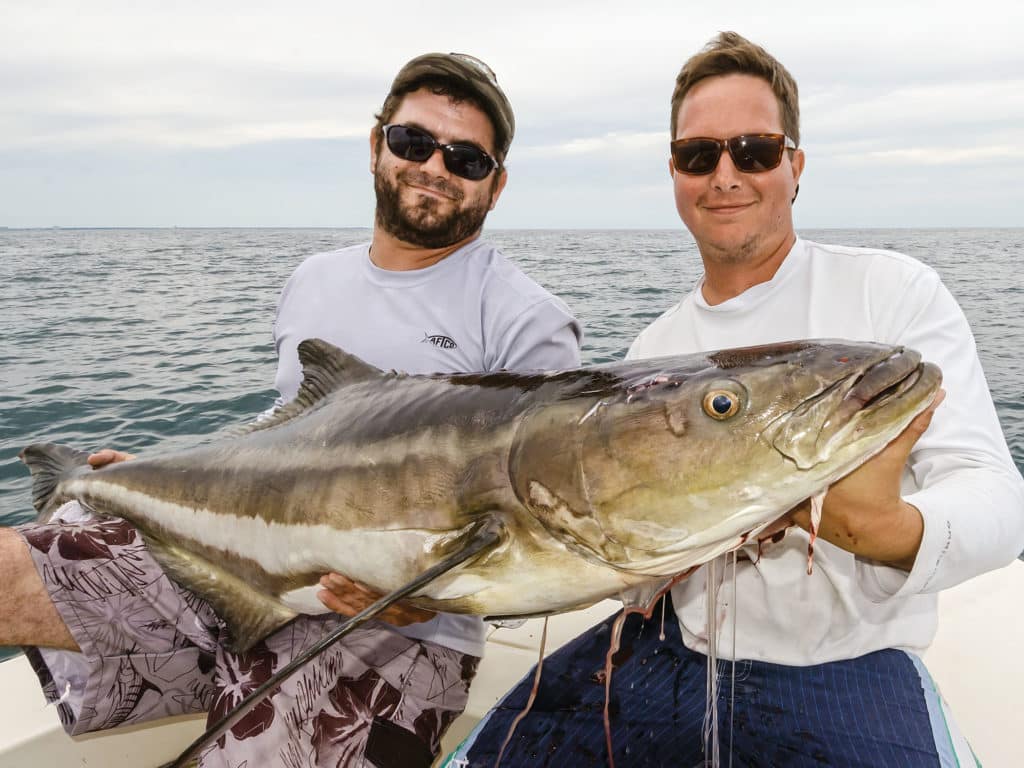
CHAOTIC EXPERIENCE
Virginia’s unofficial fishing ambassador, Dr. Ken Neill, is another that converted early to trolling swimming plugs. He loves the simplicity and adaptability of the lures. “If I’m fishing alone, I just put out two lines and go,” he says. Fishing aboard his 36-foot express, Neill usually sets out the plugs as soon as he leaves Rudee Inlet. “Last summer, I hadn’t even passed the sea buoy when both rods went down.” Neill threw the boat on autopilot and went to work. “I was hustling between rods, keeping lines from tangling and watching where I was going. But eventually, I landed the pair of 40-pound jack crevalle that caused the chaos,” he laughs. “Good thing I didn’t have more lures in the water.”

COVER SOME GROUND
TARGET SEARCH
Both Neill and Seymour look for the fishing to fire up along the beach in midsummer. Then they work from one inshore structure to another, trolling over submerged humps, wrecks and reefs. “From Cape Henry south to Sandbridge, you can find bumps and hills with the navigation chart. Then just pull the lures over any depth contour or rough bottom from the beach out to 60 feet,” Neill instructs. Color and temperature changes also draw Neill’s attention, plus he frequently finds huge masses of bunker and spots kings skyrocketing, as well as schools of cobia and red drum on the surface. “The plugs enable me to adjust quickly to get on the fish.”

PLUGGING AWAY
Late in the summer, Seymour and Neill move farther offshore. Chesapeake Light Tower hosts a variety of structure that holds kings and jack crevalle. From the extensive artificial reef and series of shipwrecks to the hills and valleys that rise and fall from 40 to 80 feet, Neill finds several different species by just circling and wandering around. Moving to deeper water in mid- to late fall, Neill has caught big bluefish, dolphin and tuna by pulling swimming plugs around the Triangle Wrecks, a series of shipwrecks dotting the bottom in 90 to 120 feet, some 30 miles from the beach.

PRO TIP # 2
“Look for kingfish, cobia and reds in clear, green water from 72 to 78 degrees. Concentrate on trolling around bait schools, along drop-offs, and over submerged structure and humps.” – Dr. Ken Neil
SURPRISE, SURPRISE
Both mid-Atlantic experts recall unexpected encounters while practicing their plug-trolling tactics. “Fishing solo last summer, I hooked two cobia at once,” Neill says. While trying to remove the fish from the landing net, he got a treble hook in a finger on his right hand, then the second treble went into his left palm. Cuffed with a hook in each hand and a spastic cobia still attached, Neill somehow managed to cut the hooks and release the fish. “I landed the second cobia, then went to work on my hand, using the sutures and Lidocaine I always keep aboard.”

Seymour tells a less painful story. “I got a late start one morning and couldn’t find live bait. A friend already had a nice king on ice, so I gave up looking for bait and put out plugs instead.” He turned the boat and trolled toward his friend, but he didn’t get far. “A 36-pounder crashed the party just a few minutes later,” he says. Thanks to the effectiveness of the tactic and the fact that anglers gain -valuable fishing time (not needing to procure live bait), trolling high-speed plugs has steadily gained fans. “It’s easy and -perfect for fishing solo,” Neill -stresses. “And it works best on rough days when it’s often difficult to find live bait,” Seymour adds.
SWS PLANNER
Mid-Atlantic kingfish, tuna, dolphin, cobia, red drum, jacks and more
What: Kingfish, tuna, dolphin, cobia, red drum, jacks on trolled plugs
Where: Nearshore and offshore mid-Atlantic waters
When: Summer through fall
Who: Fast-trolling swimming plugs is a simple tactic that can be used on any ocean-worthy boat with electronics to locate schooling bait, fish and fish-holding structure. These charter operations can help you fine-tune it:
Capt. Jake Hiles matadorcharters.com 757-749-6008
Princess Anne Distributing princessannedistributing.com 757-428-1000
SWS TACKLE BOX
Mid-Atlantic kingfish, tuna, dolphin, cobia, red drum, jacks and more
Rods: Medium-heavy, 7-foot conventional
Reels: Lever-drag, 30-pound-class
Line: 65-pound braid or 30-pound monofilament
Leader: 6 to 12 feet of 40- to 60-pound monofilament or fluorocarbon
Lures: Rapala X-Rap Magnum XRMAG10 and XRMAG20, Countdown Magnum CDMAG11 and CDMAG18; MirrOlure Classic Series, Big Game Series 113MR

